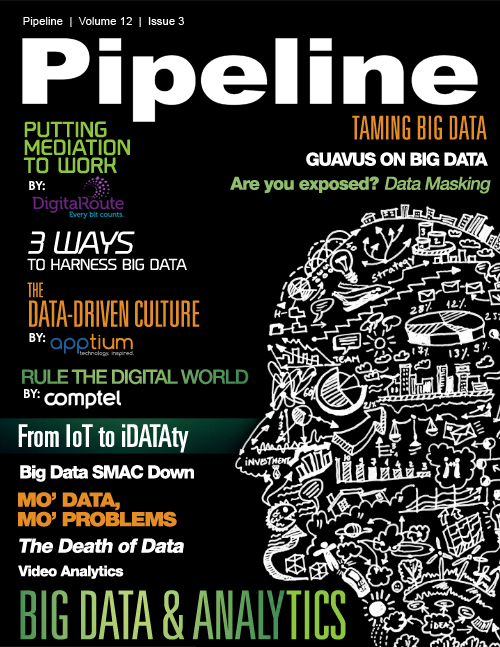The Evolution of Big Data: How Intelligent Fast Data Will Rule the Digital World
By: Mikko Jarva

Evolution is one of life’s certainties, and it is manifesting in the digital and communications industry in the form of a new breed of big data, bolstered by predictive analytics and machine-learning capabilities.
The increasing volume, variety and velocity of data is making this evolution necessary. Mobile data traffic alone will increase at an estimated compound annual growth rate (CAGR) of 57 percent between 2014 and 2019, according to Cisco. Moreover, an influx of 50 billion connected devices by 2020– from smart cars, to smart shoes, to smart washing machines – will produce even more information.
For digital and communications service providers, all of this data presents considerable opportunities in marketing, sales and services, if they can move quickly enough to interpret what the information means and turn these insights into immediate action. However, while business intelligence and analytics platforms do a fair job of collecting and storing multi-dimensional customer information, these systems don’t empower operators to leverage data at its peak moment of value – when it is created. In fact, only 20 percent of operators say they are able to turn data discoveries into action, according to TeleTech, and getting from data to actions usually take days or weeks from the events that created the data.
Big data has had its moment, but it’s now in the rear-view mirror. That news may seem unbelievable to some, and potentially unwelcome to the businesses that will spend an average of $8 million on big data initiatives this year. However, at a time when digital and communications technology is lifting the level of convenience, personalisation and immediacy that buyers expect, more is needed from operators’ back-office platforms.
The next evolution of big data is intelligent fast data, which describes an approach for integrating an ever-increasing number of raw data sources, enhancing that crude data with rich insights, analyzing it in real time, and then deriving immediate, automated decision-making and actions. Enriched with an embedded layer of predictive analytics, intelligent fast data improves its knowledge of customers over time with machine-learning capabilities. As a result, it enables new opportunities in three key areas: real-time marketing, untapped revenue sources and smarter business optimisation.

Real-Time Marketing
Rapidly shifting buyer dynamics are changing how operators market and sell their services, particularly to existing customers. Buyers today, on both the consumer and business side, are increasingly dictating their own purchasing experiences, which now occur on a wider range of digital platforms.
This era of digital natives – “Generation Cloud” – is resisting one-size-fits-all offerings and overly strict service terms, and demanding greater flexibility, personalisation and options from their digital and communications service providers. For example, a recent survey from Comptel found that 65 percent of consumers would prefer to buy digital content and services when it is most convenient for them and on their own terms.To reach these buyers, digital and communication service providers will need to deliver the right message, on the right device and at exactly the right time. Intelligent fast data can empower these operators to take what they learn from buyer behaviour and translate it into proactive, highly-targeted real-time marketing offerings.



















